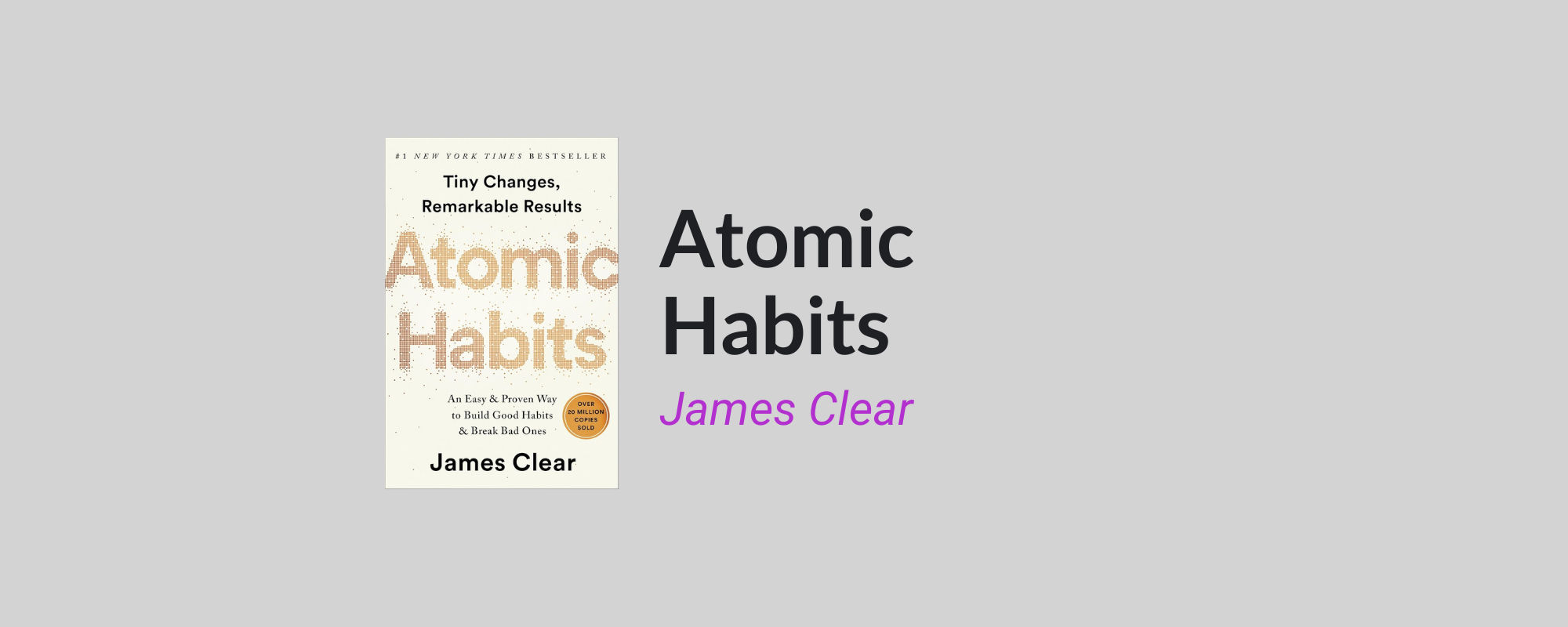Atomic Habits: Tiny Changes, Remarkable Results

In a world obsessed with overnight success stories, Atomic Habits by James Clear is a refreshing reminder of the power of incremental change. This book explores the compounding impact of small habits—those tiny actions we often overlook—and shows how they can shape a completely transformed life. Clear’s message is simple yet powerful: big achievements don’t come from massive action or profound willpower. Instead, they come from building better systems and focusing on continuous improvement.
What makes Atomic Habits so compelling is how it shatters the illusion that success requires an enormous, single effort. Instead, it’s the small, consistent changes that determine our trajectory. The book left me reflecting on the habits I’ve adopted, for better or worse, and what small adjustments I can make to become 1% better each day. This book resonated deeply with me, and the practical strategies Clear presents could help reshape our lives—one tiny change at a time.
The Power of Tiny Habits
James Clear lays out a framework for understanding how habits work and why they are such a powerful tool for change. He breaks down the science behind habits—cue, craving, response, and reward—and demonstrates how this loop drives almost everything we do, often without realizing it. What hit me the most was how Clear reveals that our daily habits act like a double-edged sword. They can either be the foundation of our success or the root of our struggles.
Take, for example, the concept of the 1% rule—how getting just 1% better each day compounds over time into significant progress. It resonated with me because it’s not about heroic actions; it’s about a subtle, daily commitment. This reminded me of how I’ve adopted a consistent morning routine—waking up early, running, and journaling. While none of these actions are monumental on their own, over time, they’ve dramatically improved my focus, mood, and productivity.
Clear also emphasizes that the key to building better habits is to make them obvious, attractive, easy, and satisfying. For example, making a habit obvious means putting visual cues in place—like keeping a book on your desk if you want to read more. Making it attractive involves associating it with something you enjoy. Making it easy means breaking it down into the simplest steps possible. Finally, making it satisfying means giving yourself a small reward when you complete it. These four laws make it much easier to stick to good habits while breaking the bad ones. This practical, clear-eyed approach is what makes the book stand out from typical motivational literature—it’s not about sheer willpower; it’s about designing an environment and a system that works for you.
Identity and Habits: The Shift That Matters
One of the core insights in Atomic Habits is the idea of focusing on identity rather than outcomes. Clear argues that the real power of habits comes not just from what we do but from who we become in the process. Rather than setting goals like "I want to run a marathon," it’s more effective to see yourself as someone who values health and fitness—a runner. This shift in identity helps reinforce habits because they become part of how we see ourselves, not just something we’re trying to achieve.
This concept struck me as especially profound. I’ve experienced this shift firsthand in my career. In my early days, I struggled with imposter syndrome—especially being so young and representing my company in front of seasoned executives. But over time, I began to internalize the identity of a strategist and a leader, and the habits that came along with that new identity—being disciplined, patient, always learning—helped me transform not just my work but how I saw myself. Clear’s insight on identity is one that many overlook, but it’s the foundation of sustainable change.
Systems Over Goals
Another key point that resonated with me was Clear’s emphasis on building systems rather than obsessing over goals. Goals are important for setting direction, but it’s the systems we create that lead to real, lasting results. The focus is on the process, not the outcome. Clear uses the analogy of winners and losers—they both have the same goals, but what differentiates them is the systems they put in place to achieve them.
I’ve always been a planner, but I’ve learned the hard way that setting goals without solid systems often leads to frustration. It reminded me of those moments when I would set ambitious targets but fail to break them down into actionable steps. Through Clear’s perspective, I realized that it’s not the goals that make the difference, but the small, consistent actions—waking up early, planning my day, holding myself accountable—that ultimately lead to success.
The Power of Environment
Clear also discusses the importance of environment in shaping our habits, making the case that behavior change is often less about willpower and more about shaping our surroundings. He suggests that the environments we create can either reinforce good habits or make them impossible to maintain. By designing an environment that encourages positive behaviors, we make it easier for ourselves to stay on track.
I found this particularly relatable. When I started adjusting my workspace—removing distractions, keeping my iPad always within reach for notetaking, and minimizing clutter—it completely transformed my productivity. Clear’s argument is that rather than relying solely on our internal strength, we should make our environments do some of the heavy lifting for us. It’s a simple but often overlooked strategy that works wonders.
Why Atomic Habits Matters
Atomic Habits is not about instant gratification or grand gestures; it’s about understanding how small actions compound over time. It’s about choosing to be 1% better every day, knowing that those small choices accumulate into extraordinary results. James Clear gives readers the tools to create systems, shape their environments, and adopt identities that align with the lives they want to lead.
If you’ve ever felt frustrated with trying to make a big change, or if you’ve found yourself stuck in a cycle of setting and abandoning goals, this book is a game-changer. It shifts the focus away from monumental changes and instead highlights the importance of consistency and gradual improvement. The lessons in Atomic Habits have certainly impacted the way I see my own daily routines, and how small changes can lead to profound transformation.
Final Thoughts: The Compound Effect of Tiny Changes
Ultimately, what we become is the sum of our habits. Atomic Habits challenges us to rethink the small choices we make and gives us a blueprint to change our trajectory—bit by bit, day by day. The true value of this book lies in its practicality—it’s not about motivation or lofty ideals but about taking real, actionable steps to become a better version of ourselves.
I close with a reflection that has stayed with me: Change doesn’t require enormous effort; it requires consistency. Every decision, every action, is a vote for the type of person we want to become. With the right habits, we can shape not just our outcomes, but our identity—and ultimately, our life.


Discussion